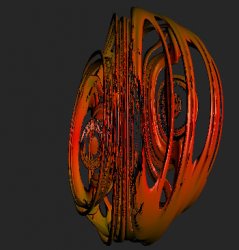I'm trying to determine which AMD/ATI graphics based macs currently have OpenCL Image support. It will help inform my current development and purchase plans. I have coded up a tile based deferred lighting scheme, but it's rather useless if there is not broad support for OpenCL Images.
![opencl-deferred.png]()
To help all you have to do is run the RayTraced Quaternion Julia-Set Example from Apple:
http://developer.apple.com/library/...ion_Julia-Set_Example/Introduction/Intro.html
If you have OpenCL Image support you'll see an awesome 3d fractal, if not you'll get something like this:
I know already that the 4000 series does not have OpenCL Image support. But I am very interested in the 5000 series, which supports OpenCL Images in theory, but may be limited by the current driver.
I would be grateful if you could list your OS X version, Mac model, GPU model, and whether or not images are supported.

To help all you have to do is run the RayTraced Quaternion Julia-Set Example from Apple:
http://developer.apple.com/library/...ion_Julia-Set_Example/Introduction/Intro.html
If you have OpenCL Image support you'll see an awesome 3d fractal, if not you'll get something like this:
Creating Texture 512 x 512...
----------------------------------------------------------------------
Using active OpenGL context...
----------------------------------------------------------------------
Connecting to AMD Radeon HD 4870...
Qjulia requires images: Images not supported on this device.
I know already that the 4000 series does not have OpenCL Image support. But I am very interested in the 5000 series, which supports OpenCL Images in theory, but may be limited by the current driver.
I would be grateful if you could list your OS X version, Mac model, GPU model, and whether or not images are supported.
Last edited by a moderator:


